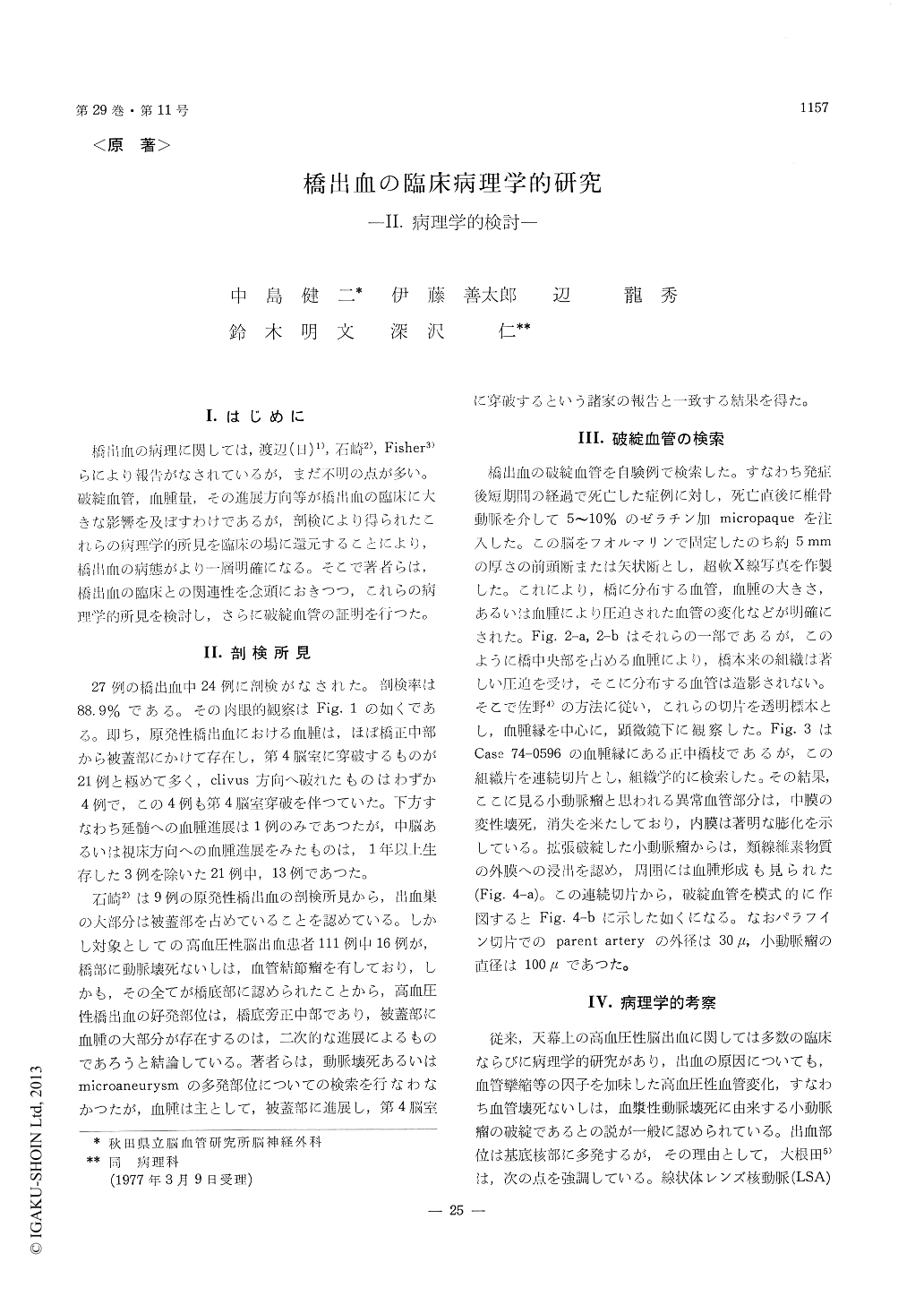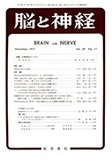Japanese
English
- 有料閲覧
- Abstract 文献概要
- 1ページ目 Look Inside
I.はじめに
橋出血の病理に関しては,渡辺(日)1),石崎2),Fisher3)らにより報告がなされているが,まだ不明の点が多い。破綻血管,血腫量,その進展方向等が橋出血の臨床に大きな影響を及ぼすわけであるが,剖検により得られたこれらの病理学的所見を臨床の場に還元することにより,橋出血の病態がより一層明確になる。そこで著者らは,橋出血の臨床との関連性を念頭におきつつ,これらの病理学的所見を検討し,さらに破綻血管の証明を行つた。
As reported in Part I, we experienced 27 casesof primary pontile hemorrhage. All of them diedand 24 of them (88.9%) were autopsied.
It was told that prognosis of the pontile hemor-rhage was extremely bad and many authors reportedpatients diagnosed as pontile hemorrhage diedwithin several days after onset.
However, we experienced 4 patients who survivedmore than one year. Recently, except this series,we had another patient with small lesion limitedto one side of the pons, who after conservativetreatment for two months showed relatively goodrecovery.
From the macroscopic examinations of the brainwith pontile hemorrhage, we concluded that theinterval of illness chiefly depended on the amountand extension of hematoma, namely in patients,who died several days after onset, hematoma wasevidenced not only in the 4th, 3rd and lateralventricles but also in basal cisterns.
Cleared specimen of the pons revealed abnormalvessels in the boundary of the hematoma andserial sections made from the abnormal vesselsrevealed the original lumen and aneurysmal sacjust adjacent to the vessel.
The wall of the sac showed fibrinoid degenerationwhich extended throughout the adventitia. Peri-vascular red blood cells were observed.
Anatomically and histologically, the etiology ofpontile hemorrhage is considered to be similar tothat of the basal ganglionic hemorrhage which ismost popular in hypertensive intracerebral hemor-rhage.

Copyright © 1977, Igaku-Shoin Ltd. All rights reserved.


